Comprehensive Guide to the Diamond Finder Tool
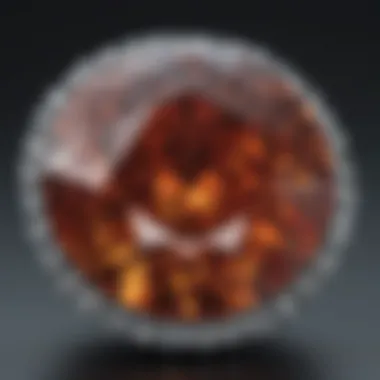
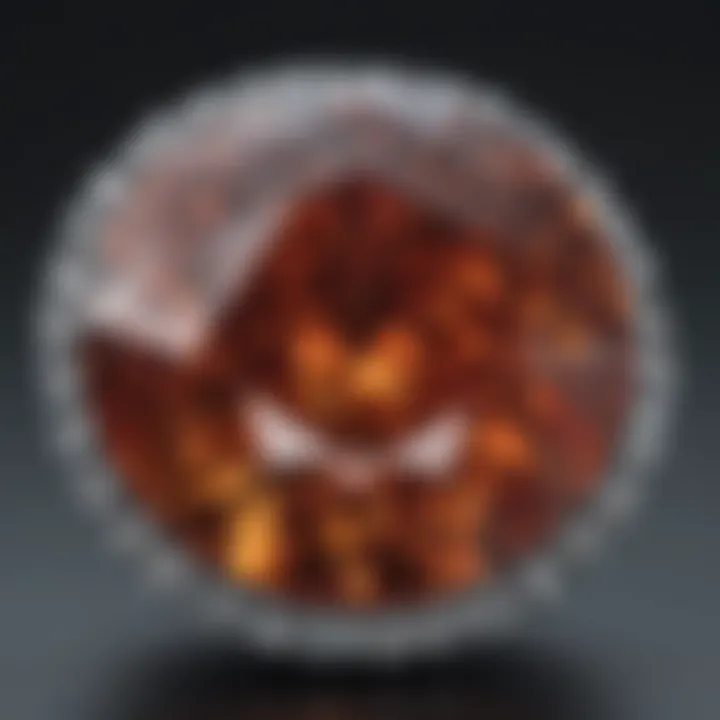
Intro
In the intricate world of gemstones, understanding their characteristics, origins, and significance is paramount. The diamond finder tool emerges as a beacon of assistance, shedding light not only on diamonds but also on the broader gemstone landscape. As we embark on this exploration, we will delve into essential aspects of gemstones, examining their definitions, classifications, and historical significance. Throughout this journey, we will highlight the relevance of the diamond finder tool in navigating this ancient yet ever-evolving industry.
Gemstone Overview
In order to appreciate the value and role of the diamond finder tool, one must first grasp the essence of gemstones.
Definition of Gemstones
Gemstones are naturally occurring substances, primarily minerals, that are prized for their beauty, rarity, and durability. They are often cut and polished to make jewelry and other decorative items. While most gemstones are minerals, some organic materials like pearls and amber also fall under this category. Each gemstone is unique, with its distinct properties such as color, clarity, cut, and carat weight, which collectively influence its market value and consumer desirability.
Classification of Gemstones
Gemstones can be broadly classified into two main categories: precious and semi-precious. This classification is based on rarity and desirability.
- Precious gemstones include:
- Diamond
- Ruby
- Sapphire
- Emerald
These stones are generally more expensive due to their rarity and are highly sought after in the jewelry market.
- Semi-precious gemstones encompass a broader range of materials, such as:
- Amethyst
- Aquamarine
- Turquoise
- Garnet
Although labeled as semi-precious, many of these stones possess stunning beauty and are cherished by collectors and artisans alike.
Understanding these classifications helps both consumers and jewelers make informed decisions. It lays the groundwork for appreciating how tools, like the diamond finder, can bring clarity in a colorful but complex gemstone market.
Historical Significance
Gemstones are not merely decorative; they carry rich histories and cultural significance that have shaped civilizations over millennia.
Origins of Gemstone Use
The journey of gemstones dates back thousands of years, with their use thought to originate in ancient Egypt. They were not only utilized for adornment but also believed to possess magical and healing properties. The allure of gemstones reached far and wide, influencing trade routes and fostering relationships between cultures. In many ancient societies, gemstones were often linked to social status and power, making them highly covetable.
Cultural Insights: Gemstones in Ancient Civilizations
In ancient civilizations, such as the Egyptians, Greeks, and Romans, gemstones were steeped in symbolism and mythology. For instance:
- The ancient Egyptians adorned themselves with lapis lazuli, believing it brought protection and wisdom.
- The Greeks used amethyst to ward off drunkenness, associating it with moderation.
- The Romans prized emeralds for their vibrant color, linking them to fertility and rebirth.
These cultural connections not only highlight the importance of gemstones but also set the stage for their modern applications.
"Gemstones have transcended their decorative virtues, becoming emblems of identity, culture, and power through history."
The diamond finder tool acts as a modern extension of this longstanding relationship with gemstones, offering insights into their selection, valuation, and authenticity.
As we progress, we will explore the functionalities and advantages of the diamond finder tool, uncovering how it aligns with historical practices while enhancing contemporary approaches to gemstone identification.
Intro to Diamond Finder Tools
In the fascinating world of gemstones, understanding how to identify and evaluate diamonds is crucial. This is where diamond finder tools come into play. These tools have gained a notable reputation within the industry for their ability to enhance the accuracy of diamond assessments. They serve jewelers, collectors, and enthusiasts alike, providing essential information that can influence purchasing decisions and valuations.
The significance of diamond finder tools lies not only in their technical capabilities but also in their ability to demystify the complexities surrounding diamond identification. By understanding the traits that differentiate high-quality stones from their lesser counterparts, users can make informed choices. Furthermore, such tools help in building consumer confidence, which is paramount in an industry often clouded by misrepresentation and misconceptions.
Definition and Purpose
Diamond finder tools are sophisticated devices or applications that assist in identifying, grading, and appraising diamonds. They utilize various technologies to evaluate critical factors such as cut, clarity, color, and carat weight—often referred to as the "Four Cs" of diamonds. Their primary purpose is to provide users with precise information, enabling them to discern genuine diamonds from imitations or lower-quality stones.
These tools can come in different forms—ranging from handheld devices that jewelers can carry, to smartphone applications that hobbyists can download. Essentially, they bridge the gap between intricate diamond characteristics and everyday understanding, making the diamond evaluation process more accessible.
Historical Context
The evolution of diamond finder tools traces back to the early days of gemology. In the past, identifying gemstones relied heavily on the expertise of gemologists and their manual methods. The tools were rudimentary; a magnifying glass or a simple loupe was often the best option available. It was a time when distinguishing a diamond from a cubic zirconia required keen eyesight and extensive knowledge.
As technology progressed, so did the need for more accurate and user-friendly tools. The introduction of optical microscopes and eventually digital imaging transformed the landscape of gemology. By the late 20th century, the first handheld diamond testers began to emerge, allowing even non-experts to assess stones with reasonable accuracy.
Today, the integration of advanced technologies such as artificial intelligence and machine learning has revolutionized how diamond finder tools operate. The current models not only offer higher precision in identification but also provide an array of features that cater to both professionals and consumers. This historical journey underscores the significance of diamond finder tools in the ongoing endeavor to ensure transparency and integrity in diamond trading.
Types of Diamond Finder Tools

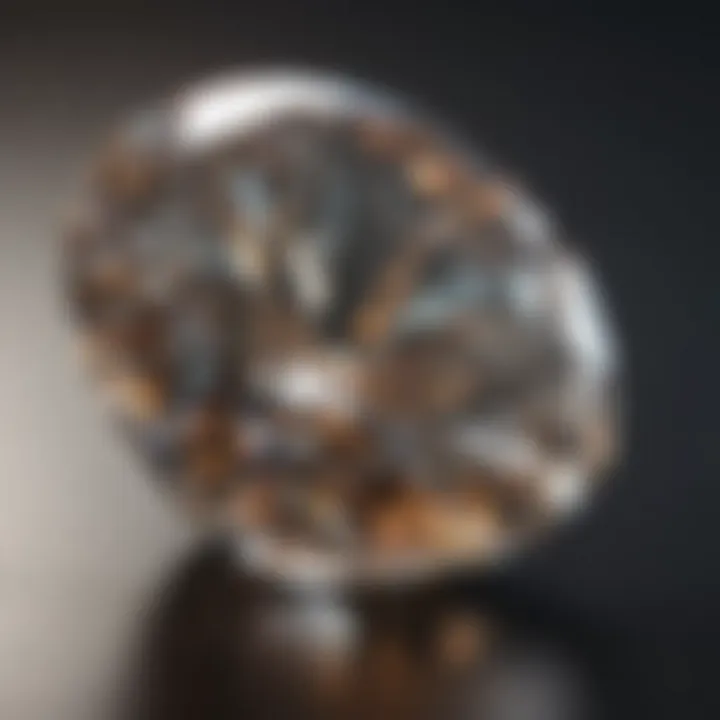
In the realm of gemstone evaluation, knowing the types of diamond finder tools is pivotal. These tools bridge the gap between a gem's mere appearance and its true value. Understanding the different types allows jewelers and enthusiasts to make informed choices whether they're hunting for the right diamond or appraising one.
Handheld Devices
Handheld diamond finders are the bane of a jeweler’s existence if they don't understand them well. These tools are small, often portable, and provide instant results. They typically use a variety of technologies, such as thermal conductivity principles or refractive index measurements, to obtain information about a diamond’s identity.
- Portability: Their size makes them convenient for both in-store and on-field use.
- Quick Assessments: The ability to swiftly evaluate diamonds helps save time in busy retail environments.
- Learning Curve: However, effective usage requires skill; inexperienced users may misinterpret the readings, especially under varied environmental conditions.
It’s essential for users to get a grasp on the device features and limitations. Popping out thinking they can determine a diamond’s quality without understanding these tools can lead to costly mistakes.
Smartphone Applications
With the rapid technological advances, smartphone applications have crawled into the diamond detection sphere, turning your phone into a gem identification tool. These apps often provide a mix of functionality and user-friendliness. By simply pointing the camera at the stone, they can analyze photos and deliver results in seconds.
- Accessibility: Almost everyone has a smartphone, making these apps readily available to consumers and professionals alike.
- User Experience: Most of these apps come with intuitive interfaces, allowing users to navigate features without a degree in gemology.
- Dependency on Technology: However, there's a caveat. The accuracy can vary based on camera quality and lighting conditions, which makes it essential to double-check with traditional methods when in doubt.
Using apps does require a critical mindset – being aware of their limits can make all the difference in ensuring you don’t mistake a good zircon for a diamond after a quick snap.
Advanced Laboratory Equipment
When we scale up from handheld tools and apps, we arrive at advanced laboratory equipment, which stands as the gold standard for diamond analysis. This level of technology includes tools such as spectrometers and microscopes designed for precise evaluations.
- Accuracy: Laboratory tools can deliver highly accurate readings under controlled conditions that exceed any handheld or app-based analysis.
- Comprehensive Analysis: They not only identify diamonds but also provide in-depth details about inclusions, origins, and grading.
- Cost Considerations: These tools require significant investment and training, so they are more suited for professional gemologists or institutions rather than average consumers.
Diamonds are forever, but knowing the right tools can help in valuing them appropriately and accurately. Both jewelers and consumers must consider which type suits their needs best, taking into account not just their budget but also their purpose and frequency of use.
How Diamond Finder Tools Operate
Understanding how diamond finder tools operate is crucial for anyone involved in the diamond industry, be it jewelers, appraisers, or even enthusiastic collectors. These tools not only assist in identifying diamonds but also enhance the overall experience of purchasing, selling, or investing in gemstones. With the right tools, users can make informed decisions, ensuring that they get the best value for their money and confidently navigate the world of diamonds.
Technological Foundations
The backbone of diamond finder tools lies in their technological underpinnings. These devices often utilize a blend of optical, electronic, and analytical technologies. For instance, many handheld devices employ lasers to analyze the structural properties of gemstones. The laser beam interacts with the stone, which allows these tools to assess characteristics such as refractive index, transparency, and light dispersion.
Furthermore, smartphone applications are revolutionizing accessibility. Through algorithms and integration with the phone's camera, users can capture images of stones and receive instant feedback about their authenticity. Some of the more sophisticated tools make use of spectroscopy—a method that examines light and can give a detailed analysis of the chemical composition of a stone. This technological synergy is not just a gimmick; it forms the basis for enhanced accuracy and trust in diamond identification.
Data Analysis Techniques
Once the data is collected through various technological means, it undergoes rigorous analysis. This stage is where the real magic happens; capabilities of transforming raw data into meaningful insights come into play. Typically, tools apply statistical models to interpret the features retrieved during testing.
For example, readers may find tools that quantify the "Four Cs"—cut, clarity, color, and carat weight—of a diamond, compiling them into a comparative matrix. This enables jewelers to make quick assessments in an industry where precision is paramount.
Moreover, advancements in machine learning have elevated the efficacy of these analysis techniques significantly. Systems can learn from past data, refining their algorithms to improve identification accuracy continually. Gathering user feedback and historical results can enhance the reliability of these tools, creating a loop of continuous improvement.
Integration with Gemology Software
The importance of integration with specialized gemology software cannot be overstated. Many diamond finder tools come with built-in compatibility, allowing users to export data to gemology programs seamlessly. This feature is especially handy for professionals who need to compile reports for clients.
The synergy between diamond finder tools and gemology software often includes special features such as:
- Storage of Data: Maintain records of previous identifications.
- Reporting Tools: Generate comprehensive reports, complete with visual aids that help clients understand the value of their gemstones.
- Real-time Updates: Tools can automatically sync with industry databases, ensuring that users always have access to the latest market information.
Integrating diamond finder tools with robust gemology software means users can tap into a wealth of resources, enhancing both their skills and market competitiveness.
Overall, the effective operation of diamond finder tools hinges on their technological foundations, robust data analysis, and seamless integration with existing software resources. This combination not only enhances user experience but also fosters a climate of trust and accuracy in gemstone identification.
Benefits of Using a Diamond Finder Tool
In today's fast-paced world, the significance of accurate evaluation in the gemstone industry cannot be overstated. For both jewelers and consumers, using a diamond finder tool presents multiple advantages that enhance the overall experience of diamond selection and purchasing. Understanding these benefits is crucial for anyone looking to delve deeper into the world of gemstones.
Enhanced Accuracy in Identification
One of the standout features of diamond finder tools is their unparalleled ability to accurately identify diamonds among various gemstones. Unlike traditional methods that rely heavily on manual inspection, these tools employ cutting-edge technology that minimizes human error. Whether it’s distinguishing a diamond from a cubic zirconia or identifying different grades of diamonds, the precision offered by these devices can save both time and effort.
However, accuracy doesn't just serve the retailer; it also empowers the consumer. A tool that accurately identifies a diamond’s quality can help buyers determine if they are getting value for their money or if they are being sold a lower-quality stone. Take, for instance, a jeweler using a diamond finder tool during a sale. With a quick assessment, they can provide customers with detailed insights into the clarity, cut, and color of the diamond, fostering trust and transparency in the transaction. This direct understanding can make the difference between a satisfied customer and a confused one.
Time Efficiency for Jewelers
Time is money. In the bustling world of retail jewelry, every second counts. Jewelers equipped with diamond finder tools experience a significant boost in efficiency. Instead of dedicating valuable minutes to evaluating a single gemstone manually, these professionals can conduct assessments at a much faster pace. For instance, utilizing advanced handheld devices, a jeweler can scan multiple diamonds in a fraction of the time it would take otherwise.
Consider a scenario where a jewelry store is preparing for a busy holiday season. By integrating diamond finder tools into their processes, staff can streamline operations and focus on customer service instead of getting bogged down in lengthy identification procedures. This not only improves customer satisfaction but also enhances sales opportunities. As jewelers can quickly present a variety of stones to clients, it converts foot traffic into actual sales, making the business more lucrative.
Consumer Confidence in Purchases
For many, purchasing a diamond is a monumental decision that involves not just a financial investment but also deep emotional significance. The last thing anyone wants is to question the authenticity of their purchase later. Diamond finder tools provide peace of mind for consumers, reassuring them that they are investing wisely. When buyers have confidence in the accuracy of the identification and grading provided by these tools, it bolsters their overall purchasing experience.
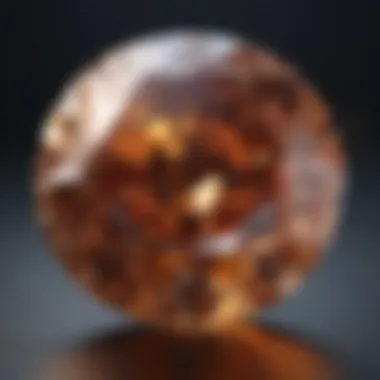
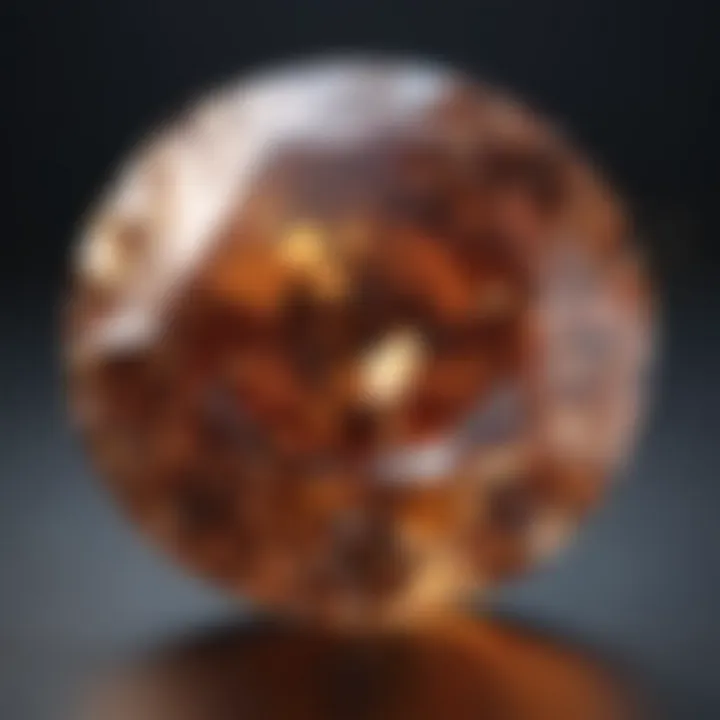
Additionally, when a consumer understands that the jeweler uses a diamond finder tool, it builds trust. Shoppers are likely to return to businesses that provide transparency and reliable assessments.
"A confident buyer is a repeat buyer. When they know their purchase is authentic, they don’t just become customers; they become advocates."
As the market continues to evolve, those who leverage these advanced tools will undoubtedly find themselves at an advantage, providing unmatched service and cultivating lasting relationships with their clientele.
Practical Applications of Diamond Finder Tools
Understanding the practical applications of diamond finder tools is crucial for both professionals in the jewelry industry and enthusiasts looking to enhance their knowledge. These tools not only contribute to refining the process of identifying and valuing diamonds but also play a significant role in various sectors that rely on gemological expertise. In essence, their utility spans across retail, education, and investment capacities, each offering unique benefits and considerations.
Retail Industry Use Cases
In the retail world, the diamond finder tool serves as a game changer. Jewelers use these devices to evaluate diamonds quickly and accurately, ensuring that customers receive the best possible product. Retailers can maintain a competitive edge by providing instant feedback on diamond quality, which is essential in a market where customers seek trust and transparency. The benefits include:
- Increased Customer Trust: When customers can see precise data on diamond quality, they are more likely to make purchases.
- Streamlined Sales Process: Jewelers can facilitate quicker transactions, as the diamond finder tools can help them assess multiple items in a short span of time.
- Minimized Returns: With better accuracy in identifying quality and imperfections, returns related to buyer remorse decrease significantly.
Gemology Education and Training
In educational contexts, diamond finder tools are invaluable. These devices are often incorporated into the curriculum of gemology programs, providing students hands-on experience with cutting-edge technology. For instructors, integrating these tools into their teaching helps bridge the gap between theoretical knowledge and practical application. Points to consider include:
- Hands-On Learning: Students learn to identify various diamonds and their properties effectively. This hands-on experience cultivates a more profound understanding of gemology.
- Real-World Skills: Graduates emerge from programs equipped with the skills necessary to apply their knowledge in professional settings, thus enhancing their employability.
”In an industry where precision is paramount, hands-on experience with diamond finder tools sets the foundation for excellence.”
Investments and Appraisals
Finally, when it comes to investments and appraisals, diamond finder tools play a pivotal role. Investors seek to ensure that they are purchasing genuine and fairly valued gems, and these tools involve a detailed assessment of a diamond's attributes. Here’s how they provide added value:
- Accurate Valuation: For appraisers, the tools help determine the true value of diamonds, factoring in clarity, color, cut, and carat weight in a precise manner.
- Investment Security: Investors looking to purchase diamonds as assets can rely on these tools for certification, which adds a layer of authenticity and security to their purchases.
- Clear Market Insights: By regularly evaluating jewel quality through these tools, investors gain insights into market trends and can make informed purchasing decisions.
In summary, the practical applications of diamond finder tools cover a broad spectrum, from retail sales to educational training, and investment appraisal. Each application emphasizes the importance of accuracy, trust, and expertise, feeding into the growing demand for educated professionals and informed consumers in the gemstone market.
Challenges Associated with Diamond Finder Tools
When discussing diamond finder tools, understanding the challenges associated with them is crucial. This section highlights persistent hurdles that both users and the industry face. Addressing these issues not only informs potential buyers and jewelers but also points to areas needing improvement.
Identifying these challenges sheds light on the technical limitations, accessibility, and necessary training for effective use. By peeling back the layers on these concerns, we gain a clearer picture of how to navigate the complexities of diamond identification, ensuring informed purchasing decisions and jewelry crafting.
Limitations in Accuracy
One of the primary challenges with diamond finder tools lies in their accuracy. Despite advancements in technology, many devices struggle to reliably distinguish between diamonds and other gemstones, particularly those that share similar characteristics. This can lead to misidentification, which is a pitfall for jewelers and customers alike.
For instance, consider a trader using a handheld detector that fails to accurately analyze the refractive index of a stone. In such cases, a diamond might be classified improperly, resulting in monetary losses and undermining the trust between buyers and sellers. Furthermore, external factors such as lighting conditions and environmental interference can affect the readings of these devices, further complicating the identification process.
Market Accessibility Issues
Another considerable challenge pertains to market accessibility. While diamond finder tools have become more prevalent, they are often priced out of reach for many small jewelers and startup businesses. A premium device may offer the latest technology, but if it comes with hefty costs, it might push emerging retailers out of the market.
Additionally, not all regions have equal access to the latest models. For gemstone enthusiasts in remote areas, finding reliable resources and support for these tools is a major hurdle. Supply chain issues or regional economic differences complicate the ability to acquire or maintain the necessary equipment, leading to a gap in effective usage across demographics.
Training Requirements for Users
A third challenge involves the training requirements for users of diamond finder tools. While these devices are intended to simplify the identification process, many users, particularly those new to gemology, may struggle to operate them effectively without proper training.
Lack of comprehensive training programs can drive a wedge between potential users and the benefits of these tools. Without a grasp of essential concepts such as light behavior in gemstones, users might misuse the devices and draw incorrect conclusions. Furthermore, the pace at which technology evolves means that continuous education is necessary. Jewelers and gemologists must adapt and learn to keep up with new software updates and features, which demands time and resources that not all businesses can spare.
"In a world driven by technological advance, staying ahead of the curve necessitates investment in knowledge as much as in equipment."
The challenges associated with diamond finder tools bring to light the necessity for ongoing evaluation and adaptation within the industry. By addressing limitations in accuracy, market accessibility, and training requirements, both jewelers and consumers can foster a more informed and efficient gem identification landscape.
Future Trends in Diamond Finder Technology
The diamond finder tool is not just a gadget of the present; it’s continually evolving, shaping the landscape of the gem industry for years to come. As technology advance, so does the capacity of these tools to deliver precise, reliable, and efficient results. Understanding future trends can be pivotal for gemstone enthusiasts, collectors, jewelry designers, and geology enthusiasts alike. By exploring these developments, users can better navigate the market and equip themselves with the most effective tools available.
AI and Machine Learning Applications
AI and machine learning stand at the forefront of the future of diamond finder technology. This isn’t just about making existing tools faster; it’s about transforming them into intelligent systems capable of learning from vast datasets. For example, imagine a diamond finder that analyzes thousands of diamond images from various angles, learning the intricate details that differentiate one stone from another.
By leveraging AI, these tools can potentially increase the accuracy of identification, minimizing human error that can sometimes occur during inspections. Moreover, the predictive analytics feature could soon allow users to assess not just current diamond conditions but also predict future valuations based on market trends. This would be invaluable for investors and appraisers looking to optimize their purchases and sales.
"The influence of AI in diamond finding can lead to unprecedented levels of accuracy and efficiency, reshaping the buyer's experience completely."
Integration with Augmented Reality


Imagine having an intricate diamond finder tool that overlays essential gemstone details onto your actual view of the stone through augmented reality (AR). This utilization of AR is set to revolutionize how jewelers and consumers interact with diamonds. With AR, potential buyers could visualize how different cuts or settings impact the appearance of a diamond in real-time.
For jewelry designers, the confluence of AR and diamond technology allows for a more informed design process. It can assist in creating personalized experiences, letting clients see various options without having to physically manipulate stones. This could also mean enhanced marketing strategies, where potential customers can engage with products virtually before physically buying.
Both these trends showcase an exciting future for diamond finder tools. Adapters and users alike should keep their fingers on the pulse of these advancements, as they promise to refine the gemstone purchasing and verification process significantly.
Comparative Analysis of Diamond Finder Tools
In the realm of gemstone identification, understanding how different diamond finder tools stack up against one another is crucial. Each tool brings its own set of functionalities, strengths, and weaknesses. This comparative analysis not only sheds light on the technological advancements in diamond finders but also aids consumers and professionals alike in making informed decisions. One might be tempted to grab the first shiny object that claims to identify diamonds, but that's akin to selecting a book by its cover; one must dig deeper.
Consumer vs. Professional Tools
The distinctions between consumer-grade diamond finder tools and those used by professionals can be quite stark.
Consumer Tools
For the average person, consumer tools are typically designed with ease of use and accessibility in mind. They might incorporate basic features such as:
- Affordability: These tools are usually lighter on the wallet. You can often find them priced anywhere from $50 to $150.
- Simplicity: User-friendly interfaces make them appealing to novices.
- Portability: Handheld designs allow users to carry them without hassle.
However, there's often a trade-off. The accuracy of these devices may not be as refined; they can give a false sense of security. Often, the information provided doesn't go beyond mere surface identification, which can be a problem for serious enthusiasts or collectors.
On the other hand, Professional Tools are tailored for the nuances of gemology. These devices are frequently used in labs and by jewelers, offering features that include:
- Advanced Technology: They utilize sophisticated analytics and algorithms. These tools can accurately assess a diamond's cut, color, and clarity.
- Data Integration: Many professional tools can connect with gemological databases for better appraisal and reference.
- Higher Price Point: With their enriched functionalities, the cost can be significantly higher, often ranging from $500 to over $5,000.
For anyone looking to genuinely explore the diamond industry, investing in a professional tool could prove invaluable. As the saying goes, "you get what you pay for."
Price Range and Value Assessment
Price alone isn’t the sole factor when determining the value of a diamond finder tool. It's crucial to assess what you're actually getting for your money.
Price Categories
- Entry-Level Tools: Prices typically range from $50 to $150. They may suffice for recreational use, such as at parties or casual gatherings.
- Mid-Range Tools: These usually fall between $150 to $500. They often come with some advanced features and can cater to hobbyists or those dabbling in small-scale gemology.
- High-End Professional Tools: These can range from $500 to over $5,000, often featuring cutting-edge technology intended for serious gemologists.
"Choosing the right diamond finder tool is less about the price tag and more about your needs and how you plan to use it."
When assessing value, consider factors such as durability, ease of use, accuracy, and warranty options. Sometimes, a more affordable option may serve you better than an extravagant choice that complicates your efforts without providing much added benefit.
User Experiences and Feedback
In any field, learning from those who walk the path before us can be invaluable. User experiences and feedback regarding diamond finder tools paint a vivid picture of what works, what doesn't, and why certain features matter. This section delves into the accounts of actual users, highlighting specific elements and benefits while also drawing attention to considerations that can guide potential buyers towards the most suitable option for their needs.
Case Studies and Real-Life Examples
Real-world applications often reveal insights that can significantly influence the understanding of technology. Take, for instance, a renowned jewelry store in New York City that utilized a handheld diamond finder tool during a major exhibition. By integrating this technology into their customer service, they were able to identify and verify diamonds on the spot, thereby elevating customer confidence. Testimonials from both buyers and staff highlighted an increase in sales due to the immediate trust built through accurate identification. Customers appreciated being able to see their purchases validated in real-time – a factor that no marketing spiel could replicate.
Similarly, a gemology student in Florida shared her experience with a smartphone application designed for diamond identification. During her training, she found that the app provided quick, reliable feedback when assessing stones during hands-on practice. However, she did note that while convenient, the app might not always hold up against more advanced lab equipment, particularly for intricate assessments.
These examples underscore how different tools can impact the diamond journey—from identification to purchase decision-making, providing a clear lens into their practical utility.
Expert Opinions and Reviews
To further enhance the understanding of diamond finder tools, insights from industry experts are essential. Jewelers and gemologists consistently offer reviews and feedback that are steeped in experience. Dr. Emily Harcourt, a respected gemologist with over 15 years in the field, emphasizes that accuracy remains paramount. "Investing in tools that are not only technologically advanced but also user-friendly is critical," she remarks. Her recommendation often points to devices that integrate data analysis techniques, boosting the overall user experience.
Additionally, professional review sites have been rife with discussions on various products. For example, on platforms like Reddit, conversations swirl around the merits of specific brands like Gemology Tools and the performance of their handheld units versus smartphone applications.
Some users express their satisfaction with tools that offer robust customer support and user manuals. Others caution about investing in lesser-known brands, stating that reliability often suffers due to inadequate backing.
"Always check for reviews on multiple platforms before committing to a diamond finder tool. What seems attractive on the surface may have underlying issues."
By aggregating feedback and expert opinions, users can make more informed decisions that align with their expectations and needs. Furthermore, understanding the experiences of others can illuminate features one might overlook, helping consumers avoid pitfalls and find value.
Closure
The exploration of diamond finder tools brings us to a vital juncture in understanding their significance in today’s jewelry landscape. From their precision in identifying diamonds to their growing integration with technology, these tools have reshaped how both consumers and professionals engage with gemstones.
Summary of Key Takeaways
To encapsulate the essence of our exploration:
- Precision Matters: Diamond finder tools enhance the accuracy of identification, reducing the likelihood of misinterpretations during the purchase or appraisal processes.
- Efficiency Drives Business: For jewelers and retailers, these tools facilitate faster transactions, aiding in customer satisfaction by providing reliable information promptly.
- Consumer Empowerment: Potential buyers gain confidence in their choices, knowing they have access to technologies that confirm their investments.
As discussed, the relationship between technology and gemology furthers the importance of remaining informed about these advances. The feedback from both users and experts highlights the way these tools complement traditional methods while introducing a dynamic aspect to the field.
Final Thoughts on the Future of Diamond Finding
Looking ahead, the future of diamond finding technology is promising. We’re likely to witness continued advancements through AI and machine learning, allowing tools to be even more intuitive. The merging of these technologies with augmented reality could potentially offer an unmatched level of visual analysis, allowing users to interact with diamond characteristics in real time.
Moreover, accessibility to diamond finder tools seems to be on the rise. With smartphones becoming ubiquitous, future applications may simplify the process even further for everyday consumers. As this field evolves, the balance between traditional practices and modern technology will shape a new era of gemstone identification.
"Amidst the sparkles and brilliance of diamonds, a reliable finding tool translates science into artistry."



